Ditapis dengan
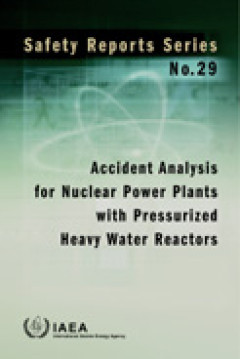
Accident Analysis for Nuclear Power Plants with Pressurized Heavy Water React…
Deterministic safety analysis (henceforth referred to as accident analysis) is an important tool for confirming the adequacy and efficiency of provisions within the defence in depth concept for the safety of nuclear power plants (NPPs). Due to the close interrelation between accident analysis and safety, an analysis that lacks consistency, is incomplete or of poor quality is considered a safety…
- Edisi
- -
- ISBN/ISSN
- 92-0-110503-7
- Deskripsi Fisik
- 57 p; 294KB
- Judul Seri
- -
- No. Panggil
- 621.483 IAE A
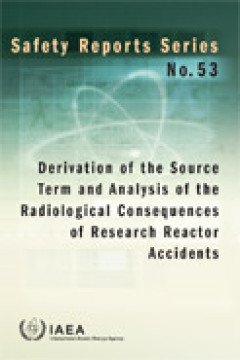
Derivation of the Source Term and Analysis of the Radiological Consequences o…
This report provides a set of suggested methods and practices for determining the source term and analysing the radiological consequences of research reactor accidents. It provides safety analysts, regulators, and reactor facility management and operations staff, with the calculation methods and techniques necessary for deriving the source term. This includes all factors relevant to the formati…
- Edisi
- 53
- ISBN/ISSN
- 978–92–0–109707–1 / 1020–6450 ; no. 53
- Deskripsi Fisik
- 193 p; 2.84MB
- Judul Seri
- -
- No. Panggil
- 616.9897 IAE D
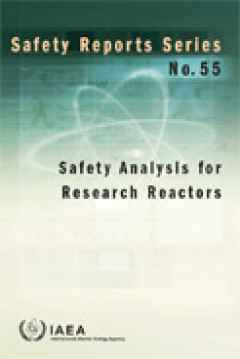
Safety Analysis for Research Reactors | Safety Reports Series No. 55
This publication provides practical guidance for performing safety analyses of research reactors. The guidance is based on present good practice worldwide. It covers all the steps required to perform safety analyses, i.e. selection of initiating events and acceptance criteria, rules and conventions, selection of computational tools, and presentation and evaluation of the analysis results. The s…
- Edisi
- -
- ISBN/ISSN
- 978-92-0-101008-7
- Deskripsi Fisik
- 81 p;1.41 MB
- Judul Seri
- -
- No. Panggil
- 621.483 IAE S
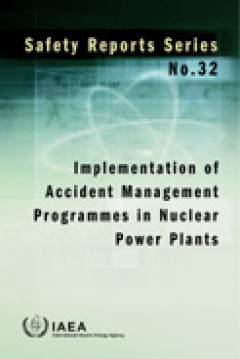
Implementation of Accident Management Programmes in Nuclear Power Plants | Sa…
This publication provides a description of the elements which should be addressed by the team responsible for the preparation, development and implementation of a plant specific accident management programme at a nuclear power plant. The issues addressed include formation of the team, selection of accident management strategies, safety analyses required, evaluation of the performance of plant s…
- Edisi
- 32
- ISBN/ISSN
- 92-0-113803-2
- Deskripsi Fisik
- 121p ; 582kb
- Judul Seri
- -
- No. Panggil
- 621.483 IAE I
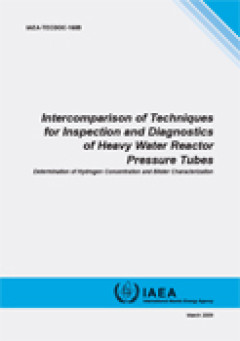
Intercomparison of Techniques for Inspection and Diagnostics of Heavy Water R…
To foster international collaboration in nuclear power technology, the IAEA has conducted a coordinated research project (CRP) on Intercomparison of Techniques for Heavy Water Pressure Tube Inspection and Diagnostics. This publication presents the results of the second phase of the CRP, dealing with blister characterization by in situ non-destructive examination (NDE) techniques and determinati…
- Edisi
- 1609
- ISBN/ISSN
- 978-92-0-100809-1
- Deskripsi Fisik
- 56p, 1,67MB
- Judul Seri
- -
- No. Panggil
- 621.483 IAE I
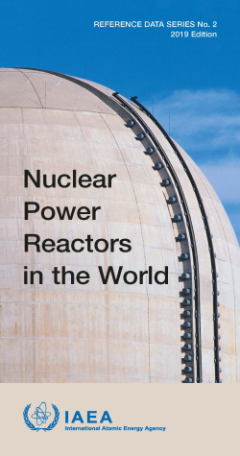
Nuclear Power Reactors in the World Edition 2019 - Reference Data Series No. 2
This is a collection of references about nuclear power reactors in the world 2019. Published by the IAEA in 2019. This document contains a lot of statistical data in the form of tables such as from construction to operation from various IAEA member countries. Final data is taken until 2018 (MM). Keyword: nuclear power reactor, IAEA, nuclear reactor
- Edisi
- -
- ISBN/ISSN
- 978-92-0-102719-1
- Deskripsi Fisik
- 80 Halaman
- Judul Seri
- -
- No. Panggil
- 621.483 IAE N
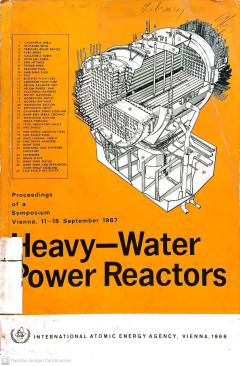
Heavy-Water Power Reactors: Proceedings of a Symposium Vienna, 11-15 Septembe…
Heavy-water reactors have evoked a great deal of interest since the early days of atomic power development. These reactors, by virtue of their good neutron economy, offer certain advantages over other types, including lower fuel inventory, versatility in fuel cycle with the possibility of using natural or enriched uranium as well as thorium, better fuel utilization, and consequently low fuel cy…
- Edisi
- -
- ISBN/ISSN
- -
- Deskripsi Fisik
- 981 p: illus.; 24 cm.
- Judul Seri
- Proceedings Series
- No. Panggil
- 621.483 IAE h
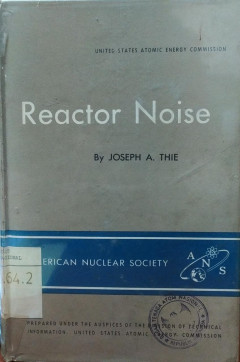
Reactor Noise
This monograph is one in a series developed through the joint efforts of the American Nuclear Society and The Division of Technical Information of the U.S. Atomic Energy Commission. The objective of this series is the publication of concise, authoritative treatises on selected subjects in nuclear science and technology, realizing a shorter writing and publication schedule together with a lower …
- Edisi
- -
- ISBN/ISSN
- -
- Deskripsi Fisik
- 262 p,; 23 cm.
- Judul Seri
- -
- No. Panggil
- 621.483 THI r
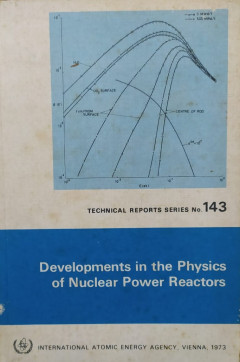
Developments in the Physics of Nuclear Power Reactors: Technical Reports Seri…
The reactor physicst must resist the tendency to become so immersed in day-to-day problems as to lose sight of the overall role of reactor physics. It is his responsibility to form an independent opinion of the overall requirements of a project with respect to reactor physics and to try to make sure they are met. The rest of this presentation gives a general picture of the areas in which rea…
- Edisi
- -
- ISBN/ISSN
- -
- Deskripsi Fisik
- 291 p., illus.; 24 cm.
- Judul Seri
- Technical Reports Series No. 143
- No. Panggil
- 621.483 IAE d
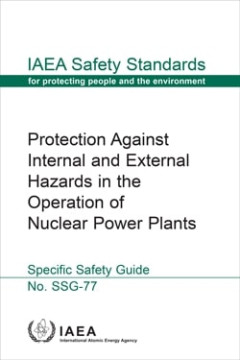
Protection Against Internal and External Hazards in the Operation of Nuclear …
This Safety Guide provides specific recommendations on protection against internal and external hazards in the operation of nuclear power plants. It provides new or updated recommendations derived from enhanced understanding of operational aspects of hazards and combinations of hazards. Operating experience gained from incidents and accidents in nuclear power plants around the world has demonst…
- Edisi
- -
- ISBN/ISSN
- 978–92–0–101522–8 (pdf)
- Deskripsi Fisik
- 83 p
- Judul Seri
- IAEA safety standards series
- No. Panggil
- 621.039.58 IAE p
 Karya Umum
Karya Umum  Filsafat
Filsafat  Agama
Agama  Ilmu-ilmu Sosial
Ilmu-ilmu Sosial  Bahasa
Bahasa  Ilmu-ilmu Murni
Ilmu-ilmu Murni  Ilmu-ilmu Terapan
Ilmu-ilmu Terapan  Kesenian, Hiburan, dan Olahraga
Kesenian, Hiburan, dan Olahraga  Kesusastraan
Kesusastraan  Geografi dan Sejarah
Geografi dan Sejarah